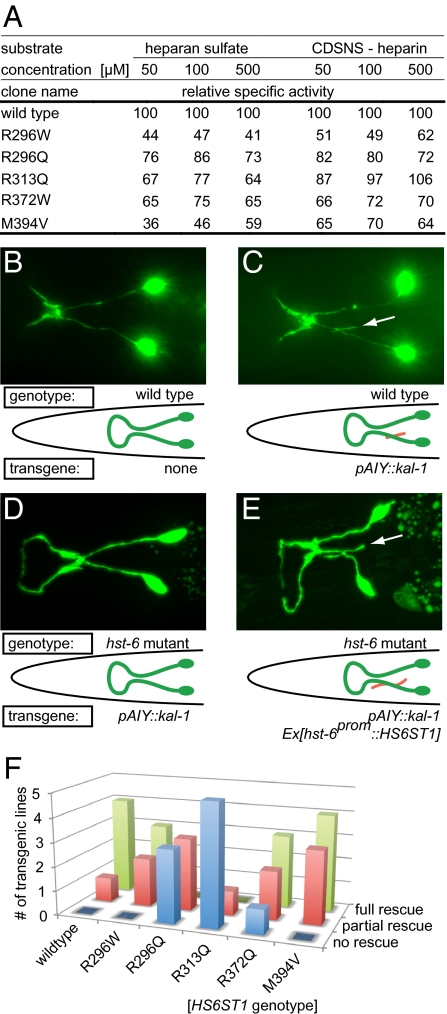Fig. 2.
Mutations in HS6ST1 reduce HS6ST1 activity in vitro and in vivo. (A) Relative specific activity of recombinant WT or mutant HS6ST1 variant. Enzymatic activity was determined with two different substrates. Acceptor substrates were used at three different concentrations (50, 250, and 500 μM) previously shown to cover the logarithmic nonsaturated range of HS6ST1 activity in this enzymatic assay (20). All experiments were done in duplicate using equal amounts of protein (Fig. S5). (B–D) Epifluorescent micrographs and schematics of the kal-1–dependent axonal branching phenotype in AIY interneurons. (B) WT morphology of AIY interneurons. (C) Animals overexpressing kal-1 in AIY interneurons display axon branching (indicated in red) (15). (D) Axonal branching is suppressed by a null mutation in the C. elegans hst-6 (15). (E) Transgenic introduction of the human HS6ST1 cDNA in a C. elegans hst-6 null mutant background restores the branches. (F) Quantification of rescue of kal-1–dependent axonal branching in AIY interneurons with human HS6ST1 variants as indicated. Shown are the numbers of transgenic lines for each construct that rescue the phenotype partially, fully, or not at all. Partial rescue was defined as ≥50% of activity and full rescue as ≥95% of activity compared with the mean of human HS6ST1 WT rescuing activity (n = 100–127 per transgenic line). Individual data of transgenic lines are presented in Fig. S2.

